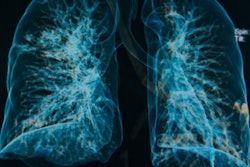
A new study published April 13 in JAMA Internal Medicine is criticizing the quality of information on websites for healthcare providers offering CT lung cancer screening. The study claims the websites don't offer balanced descriptions of screening's pros and cons.
These findings suggest that there's room for improvement if these websites are to function as reliable patient decision aids, wrote a team led by Dr. Stephen Clark of the University of North Carolina at Chapel Hill.
"The lung cancer screening program websites of academic and community medical centers evaluated in this study rarely included a balanced message of potential benefits and harms that aligns with current recommendations," the authors wrote.
The U.S. Preventive Services Task Force recommends annual low-dose CT screening for lung cancer in patients at high risk of the disease, but it also recommends that patients assess the benefits and harms of screening before pursuing it. Many hospitals have developed websites geared toward lung cancer screening education, but it's unclear whether they offer balanced information, the team noted.
Clark's group assessed 162 lung cancer screening program websites, half of which were from academic medical centers and half of which were from community centers. The researchers defined a screening benefit description as any explanation of the potential reduction in lung cancer mortality associated with CT lung cancer screening, and they categorized screening harm descriptions as any mentions of false positives, false negatives, overdiagnosis, radiation exposure, and incidental findings.
Overall, the websites described the potential benefits of lung cancer screening more than its potential harms (98% compared with 48%). The researchers also found the following:
- The most frequently cited potential harm was the possibility of a false-positive result (44%).
- Community centers were less likely than academic centers to list harms:
- Any potential harms (40% versus 57%)
- Potential harm from radiation (25% compared with 43%)
- Overdiagnosis (0% versus 14%)
- Most websites (73%) did not explicitly recommend that individuals personally consider the potential pros and cons of screening; community centers were less likely than academic centers to give this recommendation (19% compared with 35%).
- Most centers (97%) suggested follow-up steps for screening, but few (22%) recommended that patients talk about lung cancer screening with their doctor.
"Information on public-facing websites of U.S. lung cancer screening programs appears to lack balance with respect to portrayal of potential benefits and harms of screening," Clark's team wrote.
The study's conclusions aren't surprising, wrote a team led by Dr. Steven Woloshin of the Dartmouth Institute for Health Policy and Clinical Practice in Lebanon, NH, in an accompanying editorial.
"Communications about medical tests, treatments, and procedures are often imbalanced in these same ways, with the expected consequence that people tend to overestimate benefit and underestimate harm," Woloshin and colleagues wrote.
Lung cancer screening websites have a particular purpose to fulfill, Woloshin and colleagues concluded.
"Ideally, lung cancer screening websites would seek to inform individuals rather than try to persuade them about getting tested," they wrote.



















